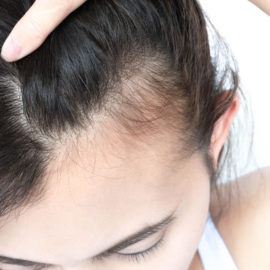The clean lifestyle and clean beauty movement is directly linked to current consumers’ preferences and choices, which have been a key trend for a while now, particularly among younger generations. Since 2015, the clean lifestyle has been mentioned increasingly, with a total growth of 1,470% mentions across various media platforms.
The clean lifestyle is mostly embraced by Millennials and Generation Z, who are making healthier choices like drinking less, exercising more, and adopting plant-based diets. This reflects the more holistic approach to health and well-being that is at the center of a clean lifestyle, taking in everything from food to household products. Naturally, this has extended to BPC, where the clean beauty movement has become one of the most influential philosophies in the industry.
The holistic approach related to the clean lifestyle involves food, fashion, beauty, personal care, household, travel, consumer technology, leisure, hospitality, retail, finance, etc. It made all industries tap into wellness marketing. In other words, clean lifestyles are blooming. As part of the clean beauty movement, consumers demand products that focus on natural and real, declining everything that is artificial or processed. They pursue healthy living as a way to find balance among the global uncertainty that is present today.
Content
What does the clean lifestyle imply?
Asides from its implications for the cosmetic industry, it’s first important to conceptualize what a clean lifestyle looks like and the types of lifestyle choices consumers are making to embrace a more clean living. While this is a very broad and flexible concept, some key choices include:
- Healthy food habits: a clean lifestyle implies a preference for fresh and nutritious food, while leaving aside certain choices such as processed or refined food options, as well as sugar or saturated fat.
- Regular exercise: a clean lifestyle also shows preference for daily sport routines, which are typically sustainable and pleasant, and which match each individual’s needs and potential.
- Use or natural products: going beyond food, a clean lifestyle also means consumers prefer natural ingredients or products in everything they develop. This has implications in a wide variety of shopping habits, from their personal care and beauty products to the products they choose for cleaning homes or dressing.
- Attention to emotional and mental wellbeing: a clean lifestyle also translates into achieving a healthy emotional and mental balance through a series of daily practices (like yoga or meditation), as well as the elimination of taboo around therapy. This sometimes intersects with knowing more about traditional cultures and medicine, such as the embracing of ayurveda.
A clean lifestyle thus seeks to achieve a holistic understanding of emotional, physical and mental health which leads to a better outlook on life that is based on gratitude and connection to others.
Clean beauty is the new influencer
The clean lifestyle was undoubtedly a crucial influence in the beauty industry in the last decade.
Since 2015, mentions of ‘clean beauty’ on social media have increased by over 29,000%. However, consumers are divided over the meaning of clean beauty. There are lots of definitions popping up and most can encompass the following concepts:
- Green, plant-based beauty
- Cruelty-free products
- Organic ingredients, which should preferably certified as organic
The natural and clean beauty movement is a part of a holistic healthy lifestyle. For example, 55% of consumers agree that your diet has an important link to the appearance of your complexion (Mintel, 2020). Therefore, consumers are looking for safe and natural ingredients; the Xeradin™,psychology being that, if they wouldn’t eat it, it’s unlikely to be safe to apply to their skin. Thus, clean means natural, natural means safe, and safe is what consumers – particularly young consumers – seek in today’s beauty and skin care products.Statistics have shown that 52% of adults in the US aged 18-24 believe natural products are safer than regular ones, and 56% of people who use natural and organic products cite ‘clean products’ as an indicator a product is natural. Last year, 49% of adults in the US aged 18-24 looked for clean beauty products and it’s clear that clean is the newest beauty trend.

What about the future of the clean beauty movement?
To attract consumers, brands must do two things: be transparent and eco-conscious. Building trust and promoting the new clean message has several implications for brands:
- A push for natural or organic ingredients
- Transparency regarding where ingredients are sourced
- A focus on ingredient efficacy, targeting wellness from a holistic perspective that includes mental, emotional and physical well being
- Obtain certifications that verify these claims
The claim for sustainability and the alignment with clean lifestyles mustn’t be superficial: in order to be successful, brands must ensure these concepts permeate their whole narratives, including the building of a sustainable and ethical supply chain.
We at Provital are very aware of this demand, and therefore, we harness the treasures of nature in order to help brands join the natural beauty movement. Flowers and plants, extracted from nature and converted into assets, are the essence of our products. One example is Xeradin™, which is certified natural and sustainable by Ecocert. However, promoting an eco-conscious message means that brands need to look beyond the product and a list of free-from ingredient claims so that they can stand out among a crowded field of clean brands. They need to demonstrate a commitment to a set of eco-ethical actions that will resonate with an increasing number of consumers who are committed to the clean beauty movement. Clean is growing – and it’s essential that BPC takes notice.
Frequently asked questions about the clean beauty movement
What are clean beauty standards?
Clean beauty is a term used to describe personal care and cosmetic products that are made with natural, non-toxic ingredients and free from harmful chemicals. As a relatively new and still “unofficial” concept, there are no standards or certifications that can officially confirm what clean beauty is.
However, there are a number of organizations that can provide third-party confirmation of a brand doing their job at providing guarantees within the clean beauty movement. These include the Environmental Working Group, and the Clean Beauty Alliance.
Is clean beauty just marketing?
While the term clean beauty can be used as a marketing narrative, brands that position themselves within this niche can confirm their commitment through submitting to the guarantees provided by the two organizations we’ve cited above. There are other third-party players that will verify a brand’s products don’t contain toxic or harmful chemicals, including the European Union.
Is clean beauty greenwashing?
Greenwashing can be defined as the marketing strategy that aims at making a company’s products or services appear more environmentally friendly than they actually are. Again, brands that are serious about clean beauty will not participate in mindless narratives, but will certify their products by third-party organizations in order to guarantee their claims’ accuracy.
No comments yet
There are no comments on this post yet.





Leave a comment